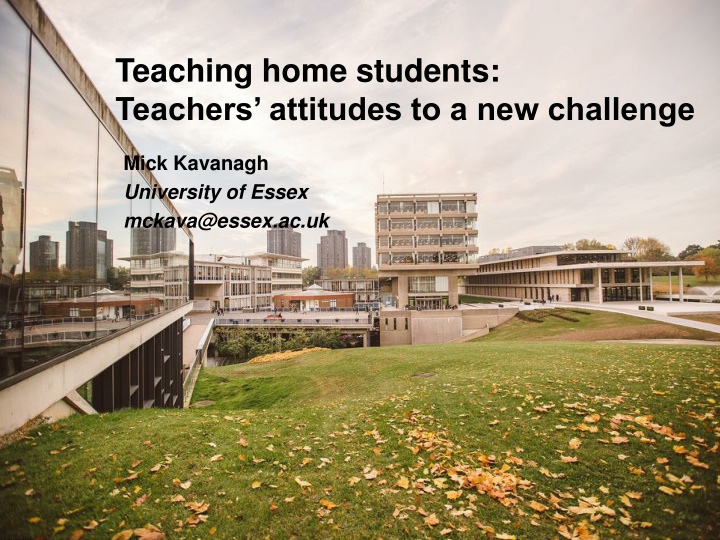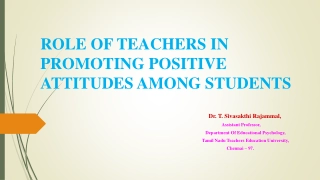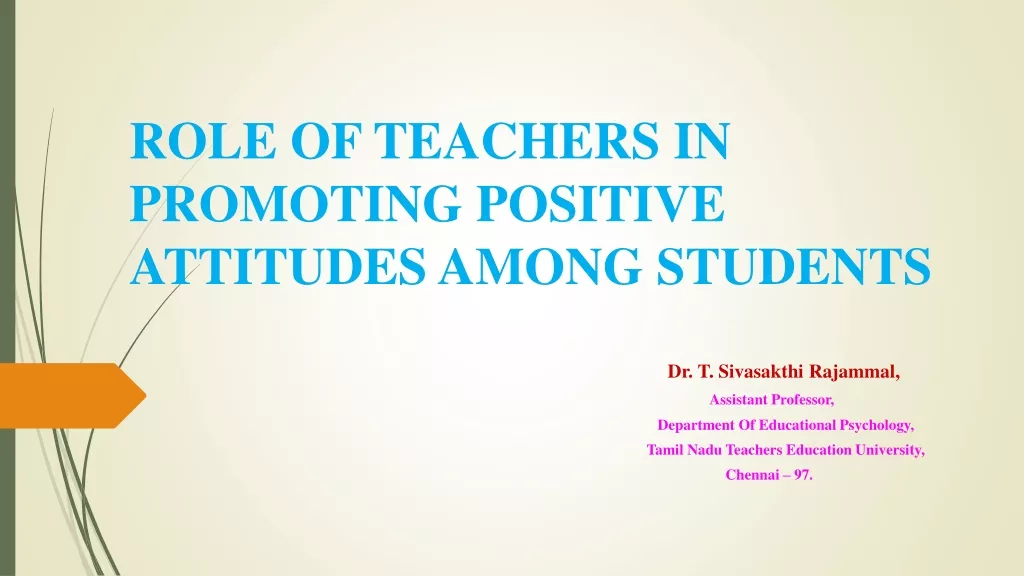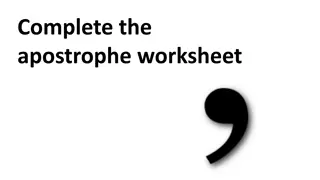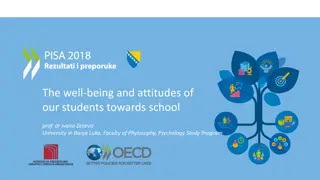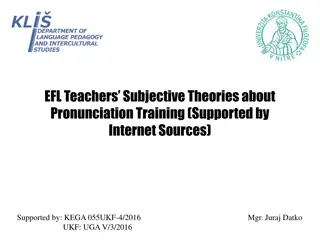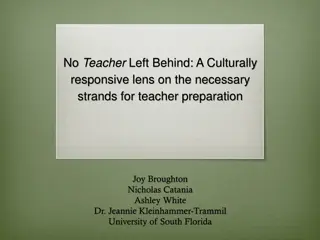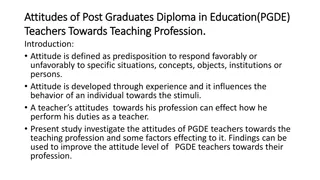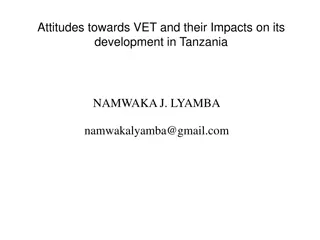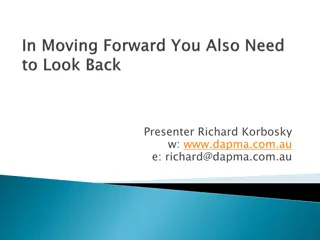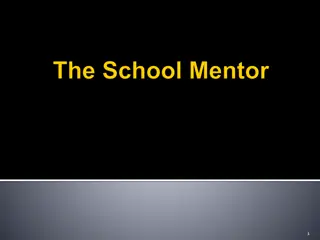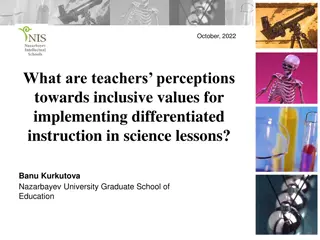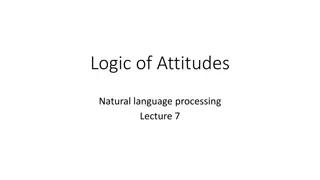Teachers' Attitudes to a New Challenge: Understanding Home Students
Teachers' attitudes towards a new challenge of teaching home students are explored through interviews with tutors, focusing on characterizing home students, addressing their needs, and adapting teaching approaches. Insights into the distinctions between UK and non-UK students and their educational backgrounds are highlighted, shedding light on tailoring teaching strategies for diverse student populations.
Download Presentation

Please find below an Image/Link to download the presentation.
The content on the website is provided AS IS for your information and personal use only. It may not be sold, licensed, or shared on other websites without obtaining consent from the author.If you encounter any issues during the download, it is possible that the publisher has removed the file from their server.
You are allowed to download the files provided on this website for personal or commercial use, subject to the condition that they are used lawfully. All files are the property of their respective owners.
The content on the website is provided AS IS for your information and personal use only. It may not be sold, licensed, or shared on other websites without obtaining consent from the author.
E N D
Presentation Transcript
Teaching home students: Teachers attitudes to a new challenge Mick Kavanagh University of Essex mckava@essex.ac.uk
Teacher cognition a) personal practical knowledge (Clandinin & Connelly, 1986) b) teachers learning and developing within a broader context of community, institution, polity, and profession (Schulman & Schulman, 2004: 267-269) England (2016): a. PPK: At level of the individual, therefore idiosyncratic b. Collective perspective: Shared beliefs and practices of a group of teachers
UoE Education Strategy (2013-14 to 2018-2019) The University will: develop and implement approaches that are focused on helping students to maximise their talents and abilities while studying at the University [ensure] our students benefit from teaching that is innovative, effective and designed to maximise student potential
Teaching home students: Teachers attitudes to a new challenge the thoughts and understandings of (TDC) teachers who work with home students deliberately vague interviews 7 tutors
Interview questions 1. characterise home students? 2. particular needs? can we satisfy them? 3. perception of the students: strengths, difficulties? 4. any difference to your teaching? 5. approaching a mixed class? 6. student background = irrelevance? tailor approaches, activities?
Home students? on the whole they are British students [T3] obvious answer - students from the UK, but it s not that simple [T4] Nationality the more useful distinction [is] between UK and non-UK students or L1 English/not English [T2] Language anyone who has been educated from school level in the UK [T5] students who ve gone through a British education system, but there s quite a wide range there [T1] Educational background have studied in the UK for a significant period of time (over a year), been through part of school system; NS/near-NS capability; someone for whom that s the educational culture they are from [T4] not just first language is English but that they ve grown up in the UK so they re familiar with the culture [T7] Combination
Home students: Characterised by diversity Route into university [T7] straight out of school mature students who ve been away from education from a non-traditional background less familiar or comfortable with academia Diverse incredibly diverse profile / as diverse as any other student group [T3] could be students who don't speak English at home [T1]
Home students and the English language the NS student uses the language with extreme facility but doesn t know how to describe it whereas the NNS has difficulty using it but knows how to describe it [T2] they still clearly have academic literacy needs, but not that basic how to put a sentence together - generally speaking (laughs) generally, generally speaking [T3]
Home students needs, difficulties Confidence Motivation Criticality Transition
Needs, difficulties: Confidence they tend to be quite confident [T5] on one level, very confident on a deeper level really not very confident at all [T5] quite outspoken and opinionated might be defence mechanisms [T1] you might expect ... in their element, lacking the inhibitions operating in a foreign language often as shy and as unforthcoming [no] clear firm pattern, rule [T2]
Needs, difficulties: Motivation I find them lacking in self-motivation [T5] not much of a middle ground some are very capable and very motivated a lot 2 years (later) don t seem to understand why they re here [T5] that intrinsic motivation, that curiosity that should lead you on your own two feet towards a subject might not be there in some cases [T6]
Needs, difficulties: Criticality they seem to be lacking in, I suppose it s critical thinking really isn t it?, or independent thinking [T5] think independently have their own opinions and ideas [T1] critical engagement with ideas being critical rather than simply regurgitating being able to structure their writing [T4]
Needs, difficulties: Transition the starkest need is that transition from being told what to do and suddenly being expected to be independent, there s a huge difference between the kind of reading, writing, studying at pre-HE level and now in HE [T1] a big jump between school and university the sort of style and the sort of level required overwhelming particularly ones who maybe didn t perform brilliantly in school [T7] always would have had the situation needed help with transition, but now lots of students struggle more [T4]
Dealing with home students in class: Different treatment? it s important to recognise that there s a mixture of students and to bring out the fact that each has their own strengths for the whole class and try to create more of a cohesive community [T1] you can talk about the positive things for both backgrounds [T7] when we talk about familiarising international students with the academic culture of the UK the discussions that you need to have with [international students] are the same discussions that you need to have with home students [T4]
Dealing with home students in class: Different treatment? I try to engage the international students first because they tend to be less confident at that surface level but quite often more capable at the deeper level whereas the home students are hopefully at least gonna be more likely to participate at surface level right away [T5] there would need to be some modification of language but I would pitch towards the majority need [T3] there are things like cultural reference that you need to be careful with, you don t want to be teaching to the home students as if it s a closed shop [T7]
Dealing with home students in class: Different treatment? I want to make it very clear to the home students that I m gonna treat the international students equally [T5] my instinct would be to want to say that it should be an irrelevance [T4] I think I pretty much do (the same) [T2]
Getting tutors talking: Some observations perceptions reflection interview individual/shared views
References Clandinin, D., & Connelly, F. (1986) Rhythms in teaching: The narrative study of teachers' personal practical knowledge of classrooms. Teaching and Teacher Education, 2, 377 387. England, N. (2016) Developing an interpretation of collective beliefs in language teacher cognition research. TESOL Quarterly,51(1), 229-238. Schulman, L., & Schulman, J. (2004) How and what teachers learn: A shifting perspective. Journal of Curriculum Studies, 36, 257 271.
Teaching home students: Teachers attitudes to a new challenge Mick Kavanagh University of Essex mckava@essex.ac.uk
